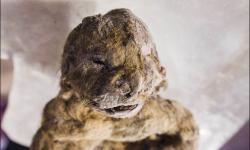Neanderthals may have conducted scientific experiments
Homo neanderthalensis, a species, or subspecies of human who lived between 250,000 and 40,000 years ago, Although proto-NeanderthalsAn extinct species (or subspecies) of human who lived in Eurasia between up to 600,000 years ago (the first 'true' Neanderthals being from around 250,000 years ago) and about 40,000 years ago. They lived alongside modern humans and interbred with them. could have existed up to 600,000 years ago. are modern humans' closest cousins. For thousands of years, modern humans lived alongside Neanderthals and interbred with them: between 2% and 5% of modern Eurasian human DNAHolds the genetic code to all living things, and is passed down to children from their parents. is NeanderthalAn extinct species (or subspecies) of human who lived in Eurasia between up to 600,000 years ago (the first 'true' Neanderthals being from around 250,000 years ago) and about 40,000 years ago. They lived alongside modern humans and interbred with them. in origin. Despite this, there have always been question marks over how 'human' the Neanderthals really were: were they capable of conceptual thought, of thinking logically or in the abstract; could they develop and adapt; did they even deliberately bury their dead?
Although proto-NeanderthalsAn extinct species (or subspecies) of human who lived in Eurasia between up to 600,000 years ago (the first 'true' Neanderthals being from around 250,000 years ago) and about 40,000 years ago. They lived alongside modern humans and interbred with them. could have existed up to 600,000 years ago. are modern humans' closest cousins. For thousands of years, modern humans lived alongside Neanderthals and interbred with them: between 2% and 5% of modern Eurasian human DNAHolds the genetic code to all living things, and is passed down to children from their parents. is NeanderthalAn extinct species (or subspecies) of human who lived in Eurasia between up to 600,000 years ago (the first 'true' Neanderthals being from around 250,000 years ago) and about 40,000 years ago. They lived alongside modern humans and interbred with them. in origin. Despite this, there have always been question marks over how 'human' the Neanderthals really were: were they capable of conceptual thought, of thinking logically or in the abstract; could they develop and adapt; did they even deliberately bury their dead?
Recent research is helping us to answer some of those questions. The small black blocks of manganese dioxide that have been found across Neanderthal sites in France, usually thought to have been used for cosmetic purposes, have been reassessed. Scientists from Leiden University and Delft University of Technology are now questioning the cosmetic theory, saying there would be plenty of better materials that were easier to source available to the Neanderthals: materials such as charcoal or soot. Instead, they propose Neanderthals were gathering these blocks, proven to help wood ignite, for fire-lighting purposes, and this is supported by archaeological evidence from fire places.
What makes this conclusion so important for our understanding of Neanderthals is that use of manganese dioxide in fire-lighting is 'not obvious nor intuitive': Neanderthals must have been testing different materials to aid combustion. This would suggest their cognitive capabilities were better than previously assumed. They might have been capable of complex and logical thought, helping them work their way through something like a scientific procedure to source and use the manganese dioxide. The fact that Neanderthals had the time and resources to collect the blocks would also suggest a level of resource management previously not associated with the species.
Whether these theories can be proven further is uncertain, but this new research should encourage all modern humans to think differently about our Neanderthal cousins.
You can read more about the research and findings here.
- Log in to post comments






